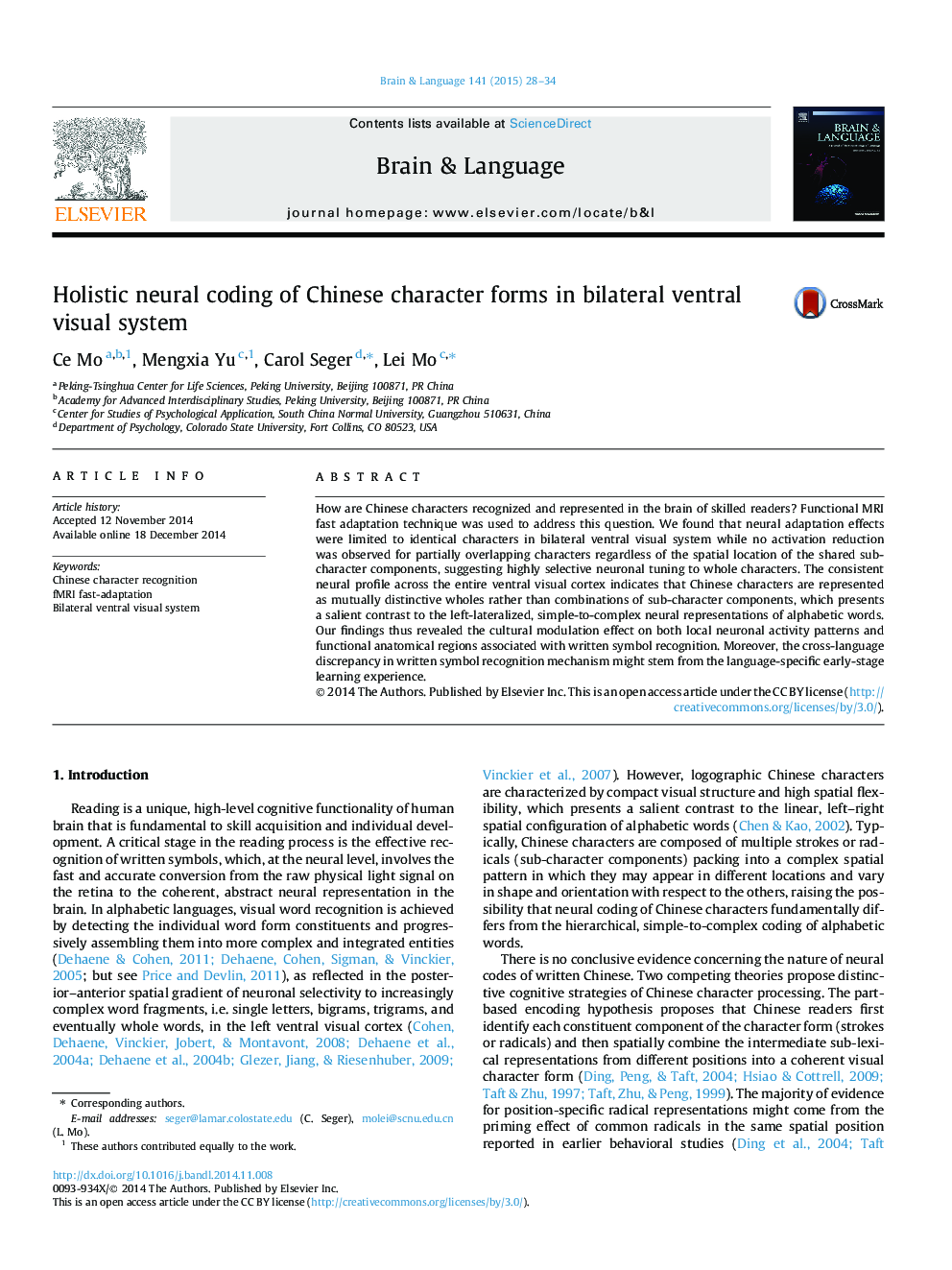| Article ID | Journal | Published Year | Pages | File Type |
|---|---|---|---|---|
| 7284390 | Brain and Language | 2015 | 7 Pages |
Abstract
How are Chinese characters recognized and represented in the brain of skilled readers? Functional MRI fast adaptation technique was used to address this question. We found that neural adaptation effects were limited to identical characters in bilateral ventral visual system while no activation reduction was observed for partially overlapping characters regardless of the spatial location of the shared sub-character components, suggesting highly selective neuronal tuning to whole characters. The consistent neural profile across the entire ventral visual cortex indicates that Chinese characters are represented as mutually distinctive wholes rather than combinations of sub-character components, which presents a salient contrast to the left-lateralized, simple-to-complex neural representations of alphabetic words. Our findings thus revealed the cultural modulation effect on both local neuronal activity patterns and functional anatomical regions associated with written symbol recognition. Moreover, the cross-language discrepancy in written symbol recognition mechanism might stem from the language-specific early-stage learning experience.
Keywords
Related Topics
Life Sciences
Neuroscience
Biological Psychiatry
Authors
Ce Mo, Mengxia Yu, Carol Seger, Lei Mo,
